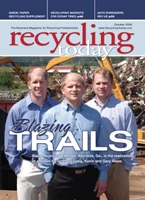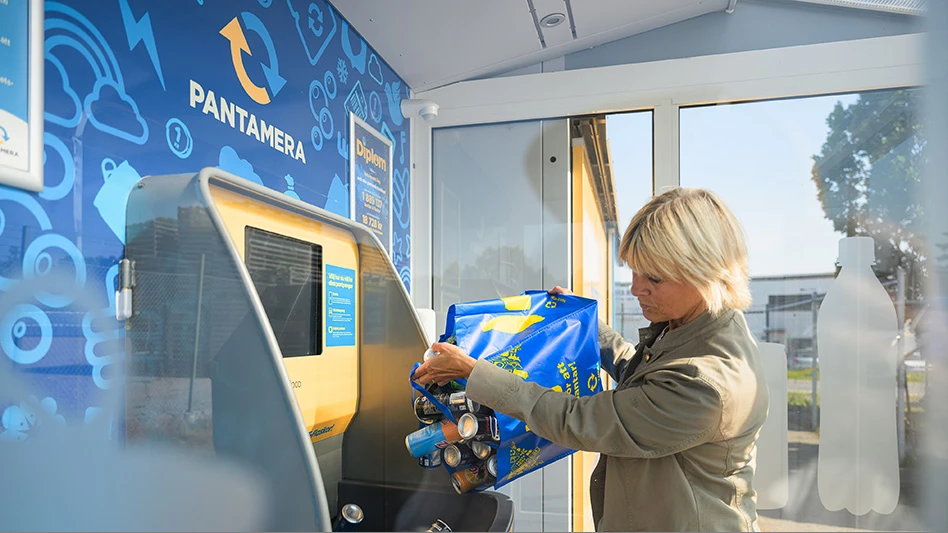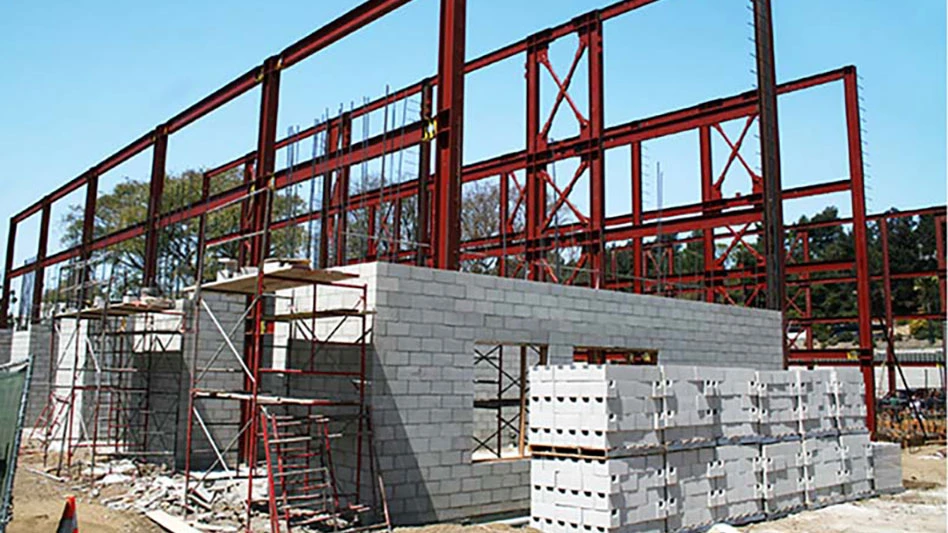The moving franchise with the unlikely name "Two Men and a Truck" makes a direct point: A start-up business can be built around buying one truck and keeping it busy.
Many document destruction companies started on this same premise. Although a fully outfitted mobile shredding truck costs a good deal more than an empty panel truck, the principal is similar.
A 2005 survey of secure shredding companies conducted by Secure Destruction Business (SDB) magazine reaffirmed the entrepreneurial roots of the industry, with 54 percent of the more than 90 respondents indicating that they started their businesses with $99,000 or less.
| Survey Says |
|
Secure Destruction Business magazinie conducted a survey in 2005 that yielded 91 responses from companies in the secure shredding business. Among the findings of that survey: • 30 percent of respondents offered product destruction when they started their business, but another 27 percent have added the service. • 18 percent of respondents offer mobile shredding only; 44 percent offer plant-based only; and 38 percent offer both. • 78 percent of respondents bale their shredded paper. • More than half of the respondents planned on adding shredding capacity in the upcoming 24 months; 48 percent also planned to add baling equipment. |
ON THE ROAD
With self-employed entrepreneurs creating so many of the start-ups, a decision usually has to be made early on whether to buy a mobile shredding truck or whether to buy a stationary shredder and lease plant space.
Among start-ups, an exception to this situation can be a recycling company or a moving and storage company that has some floor space to devote to a secure plant. Such companies can almost certainly benefit from using existing trucks to pick up documents and using existing floor space to locate a stationary shredder.
But another class of start-ups are attracted to the "Two Men and a Truck" idea of low overhead combined with a commitment to serve customers at their location.
Mark McKenna of Shred-Tech, Cambridge, Ontario, Canada, has helped that company develop a sales and marketing program specifically targeting start-up companies and even prospective customers considering entering the secure shredding business.
| Balancing Act |
|
When secure destruction companies shop for document shredders, security may be prompting them to consider the smallest possible particle size, but productivity and recycling markets can be reasons to consider the other options. According to equipment manufacturers, the considerations of customers and of the National Association for Information Destruction (NAID) play a role in what customers request. "A lot of our customers consider what the NAID specifications are to meet AAA certification," remarks Chris Hawn, director of business development for waste systems at Vecoplan LLC, High Point, N.C. Hawn says that some customers, particularly those with recycling roots who can be more aware of the value that paper mills place on better fiber quality, may gear their units toward producing the largest shreds possible within the NAID specs. At the other end of the spectrum, customers who serve clients that must meet Department of Defense (DOD) shred size specifications of 3/32 inch must use screens to meet this tight specification. Mike Spiger, CEO of Ultrashred, Spokane, Wash., says his company’s mobile shredding trucks contain hammermill-style shredders usually outfitted with 2-inch screens. "Because of the way our feed system works, there is nothing that is not shredded by the hammers before it goes through the screen," says Spiger. "The hammers continue to pulverize the paper until it will fall through that screen, and once it does it is not possible for that document to be reconstructed," he comments. An option Vecoplan offers to buyers is the availability of screens in many sizes. "Our machines are flexible," says Hawn. "If they want to go small, they can do that, but then if they want to go larger they can change the screen." When considering particle size, productivity joins mill acceptance as an issue. "Using one of our shredder models as an example, it can shred about 3,000 pounds per hour with a 2-inch screen," says Hawn. "But that production goes down to 500 or 600 pounds per hour on the DOD setting." Spiger says that hammermills will operate faster, perhaps chewing through 5,000 pounds per hour on a setting where a grinder can only handle 1,500 pounds. He notes, though, that the Ultrashred hammermill is less versatile and is designed for paper rather than a variety of products. "It’s a paper destruction product that isn’t necessarily designed to handle X-rays or other items." Reaching such decisions is not easy for document destruction company managers. Without question, security remains the foremost consideration, as offering a guarantee of security can be the primary selling point for sales representatives. But with losing out on price also a concern, shredders do not want what was once a revenue stream to turn into a disposal cost. |
McKenna, who works from an office in Durham, N.C., says individuals researching the business should be aware of the different business models. "We tell our customers that there is more than one way to skin a cat," says McKenna. "It’s a sales-driven business, so the key is successfully selling your service to the market."
Even so, Shred-Tech has found that most start-ups gravitate toward the mobile shredding model as a starting point, often for the reason spelled out in the SDB survey. "Part of that decision is their financial strength when they get into the business," he notes.
Such start-ups can even be hard-pressed to buy a new shredding truck, which is why manufacturers can offer trade-in models and also offer help securing leases or financing.
Overcoming the lack of capital barriers through financing assistance and by offering pre-owned models has been part of a Shred-Tech program that, according to McKenna, helped the manufacturer put 26 start-up companies into the industry in 2005.
That program also includes a start-up guidebook and Sample Business Plan that helps spell out the advantages of the on-site mobile shredding model. "On-site shredding offers clients the peace of mind of knowing sensitive information has been totally destroyed in their presence," a portion of the guidebook reads. "The shredded material is compacted and mixed with other data, making it virtually unidentifiable. The combination of security containers and on-site shredding provides an unbroken chain of custody until the material is destroyed."
Secure shredding firms who start with either exclusively a plant-based or a mobile truck-based business model will certainly be tempted to "negative sell" against the other business model as they seek to gain customers and build market share.
But an increasingly well-established pattern is demonstrating that a growing company is almost certain to offer both types of shredding services as they expand geographically or just within their own market region.
Such a pattern would seem to indicate that start-up companies may be wise to rein in their negative selling tactics in order to cut down on the awkwardness that may occur when they diversify their businesses in the future.
RAISING THE ROOF
The 2005 SDB survey revealed that more than one-third of respondents offered both plant-based and mobile shredding services. Additionally, some 57 percent of respondents planned on adding stationary shredding equipment and a nearly equal number—56 percent—planned on adding mobile shredding trucks. Almost certainly, some of this planned buying activity involved companies "crossing the divide" to add one business model to the other.
For companies that start using mobile trucks only, expanding to add plant-based services can seem a little daunting. The new capital outlays combined with a new layer of monthly costs can be considerable.
On the capital side, an in-plant system can include the obvious additions of renting or buying space combined with capital equipment that includes a shredder, a baler, conveyors and material handling equipment.
But the monthly budget will carry a lot more than just these fixed assets. Additional line items will include electricity, personnel, security costs, baling wire and other maintenance and operations costs.
Commonly, a company that started out by operating mobile shredding trucks will have to be confident in its ability to both keep growing and convert clients to a plant-based model if it is going to make the leap to plant-based shredding.
Additionally, such business owners will have to recognize the other advantages that can be accrued by adding in-plant operations. "A plant allows you to bale your own paper and get good re-sale value on the paper," notes McKenna, who adds, "But it does certainly open up other opportunities."
| Fuel Focus |
|
Rising fuel costs are a harsh business reality for the owners of mobile shredding companies. "Everybody has something in their business that’s just part of doing business," says Jon Schwieters, president of ShredAway, Eau Claire, Wis. "If you’re mobile, [fuel prices] are just part of the cost of doing business." While diesel prices are beyond their control, some offer advice for controlling the cost of fuel. Schwieters tells his drivers to shut down if they’re going to be away from the truck for more than two minutes. "Anything over two minutes, you’re just wasting fuel," he says. Scott Fasken of Colorado Document Security says driving slower also helps—even a 5-mph drop in speed can make a difference, he says. |
Among those opportunities are doing greater volumes of work with fewer drivers who are simply picking up documents rather than spending the time to shred them on site.
Another opportunity is product destruction and the destruction of items such as software, CDs and DVDs. "The mobile units can certainly destroy such things, but from our standpoint we recommend not contaminating paper with small amounts of such material," says McKenna.
The plant based system may also increase a company’s ability to invoice and bill a job promptly and accurately. Working from an office located near the plant can help by simply providing a "home base" for billing and invoicing that can be lacking in a mobile operation. Additionally, it provides a place where route drivers who have questions can call in for answers.
This can be a helpful contrast versus mobile-based operations that try to bill on the spot at job sites. While this sometimes can go smoothly, at other times it can lead to problems if a glitch or unanswered question at a job site delays the issuing of an invoice. This can be3 followed by a hectic schedule the next day that allows the entire matter to quickly be forgotten.
Whether in-plant systems bring added hassles or solve existing ones, they start becoming a necessity for many companies who have built a critical mass of business that becomes increasingly difficult to service on-site.
Typically, clients who are happy with a company’s service can be convinced that the same company can be trusted to unlock their containers off site and shred them at a secure plant. In many cases, though, the clients should be offered a tour of the secure site and even the opportunity to view the shredding of their own files via a closed-circuit television system or other Web-based video system, or even at a plant viewing room.
A survey conducted by the National Association for Information Destruction (NAID), Phoenix, Ariz., in 2003 also found that a majority of its respondents (74 percent) conducted both mobile and plant-based operations
According to a presentation of those survey results made by NAID Executive Director Bob Johnson at the 2004 NAID Annual Conference, the survey also showed that the "fastest-growing companies offer both plant-based and mobile shredding services."
Most companies are finding that offering both options keeps them "in the game" for a variety of business opportunities, ranging from on-site purges of a few boxes of old records on through to serving national accounts as part of a co-operative network.
This feature originally appeared in the July/August issue of Secure Destruction Business magazine, which is also produced by the Recycling Today Media Group.
Get curated news on YOUR industry.
Enter your email to receive our newsletters.

Explore the October 2006 Issue
Check out more from this issue and find your next story to read.
Latest from Recycling Today
- CP Group announces new senior vice president
- APR publishes Design Guide in French
- AmSty recorded first sales of PolyRenew Styrene in 2024
- PRE says EU’s plastic recycling industry at a breaking point
- Call2Recycle Canada, Staples Professional expand partnership
- Circular Services breaks ground on north Texas MRF
- Tariff uncertainty results in choppy nonferrous scrap flows
- CATL, Ellen MacArthur Foundation establish battery partnership






